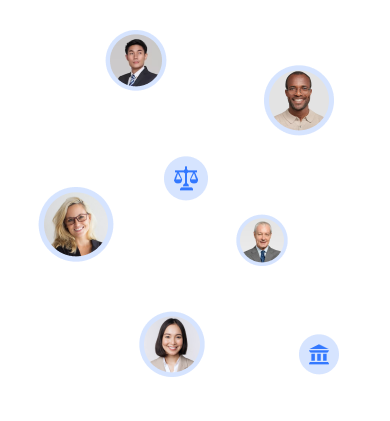Are you considering obtaining a patent in Florida but unsure of where to start? This article will guide you through the patent process in the Sunshine State, from conducting a patent search to patent issuance and maintenance. We will also explore the different types of patents available, the costs associated with obtaining a patent, and the common mistakes to avoid. Stay tuned to learn how long the patent process takes and how to navigate it successfully.
Key Takeaways:

- Conducting a thorough patent search is crucial in the Florida patent process to ensure your invention is unique and not already patented.
- The three types of patents in Florida are utility, design, and plant patents, each with its own specific requirements and benefits.
- The cost of obtaining a patent in Florida includes application fees, attorney fees, and maintenance fees that should be budgeted for in the process.
What is the Patent Process in Florida?
The patent process in Florida includes multiple essential steps, beginning with the initial idea and concluding with the issuance and maintenance of the patent to ensure proper protection under patent law. This process involves:
- Conducting a patent search
- Identifying the necessary patent type
- Preparing and submitting the patent application
- Undergoing examination
- Ultimately obtaining the patent issuance and maintenance
1. Conduct a Patent Search
Performing a thorough patent search is the initial essential step in the patent process to confirm the novelty of your invention and ascertain that it has not been disclosed in prior art.
This stage is critical as it allows for the identification of existing patents, publications, and other forms of prior art that could affect the patentability of the invention. By reviewing prior art, one can evaluate the uniqueness of the invention and make informed decisions regarding potential patent strategies.
Tools such as Google Patents and professional patentability search services can facilitate this process by offering comprehensive search results. Seeking advice from a patent attorney is highly recommended to navigate the intricacies of patent law, interpret search results effectively, and receive expert guidance on the subsequent steps.
2. Determine the Type of Patent Needed
Determining the type of patent needed is essential, as it defines the scope of protection for an invention, whether it falls under a utility patent, design patent, or plant patent.
A utility patent typically covers the functional aspects or the operation of an invention. For example, if a new machine or software algorithm has been created, a utility patent would grant exclusive rights to use, sell, and manufacture that invention.
On the other hand, a design patent focuses on the ornamental design or aesthetic appearance of a product. For instance, a unique jewelry design or the shape of a smartphone could be protected under a design patent.
Plant patents, however, are specific to new plant varieties that have been asexually reproduced.
3. Prepare and File a Patent Application
Preparing and filing a patent application involves meticulous drafting to ensure comprehensive description and protection of all aspects of the invention, whether it is a provisional application or a utility patent.
To fulfill the specific requirements for a patent application, detailed descriptions of the invention need to be included. These descriptions should cover the methodology, function, and characteristics of the invention, supplemented with relevant drawings or diagrams for clarity.
Precise drafting of claims is essential, as they delineate the exact scope of protection sought for the invention. A patent attorney plays a vital role in this process by ensuring compliance with all legal standards and regulations, conducting thorough research to prevent infringement issues, and offering expertise in navigating the intricate patent application procedure.
4. Patent Examination Process
The patent examination process carried out by the USPTO is a crucial phase in which the patent application undergoes a review to ensure compliance with legal requirements and patentability criteria.
During the examination, the USPTO evaluates the application to confirm that it aligns with statutory conditions such as novelty, non-obviousness, and usefulness. This evaluation typically entails a comprehensive assessment of the application’s claims, description, and any accompanying documents.
The significance of this process lies in determining the eligibility of the invention for patent protection. Throughout the examination, applicants can anticipate communication from the patent office, which may involve requests for additional information, clarification, or amendments to the application. Feedback from the USPTO assists applicants in navigating the intricate process and resolving any potential issues that may arise.
5. Patent Issuance and Maintenance
After the patent is granted, the responsibility of patent issuance and maintenance begins to ensure the protection and enforcement of patent rights.
Following the patent grant, it is important to stay diligent in paying maintenance fees to uphold the patent’s validity. These fees are usually due at specific intervals post-issuance. Furthermore, it is crucial to monitor for any potential infringements on the patented invention.
This includes monitoring the market for any unauthorized use of the patented technology. Acting promptly against any infringement is essential to uphold the exclusivity of patent protection and protect intellectual property rights.
What are the Different Types of Patents?
It is important for inventors and businesses to have an understanding of the various types of patents available. This knowledge helps them select the most suitable form of protection under patent law, whether it is a utility patent, design patent, or plant patent.
1. Utility Patents
Utility patents are the most common type of patent, providing protection for new and useful inventions, processes, machines, or compositions of matter.
These patents are important for safeguarding the functional aspects of an invention, ensuring that its utility remains exclusive to the patent holder. They serve as a valuable tool for innovators, giving a legal basis to prevent others from making, using, selling, or importing the patented invention without permission.
The scope of utility patents encompasses a wide range of technologies, from mechanical devices to chemical compositions, offering broad protection to inventors. Applying for a utility patent involves submitting a detailed application to the United States Patent and Trademark Office (USPTO), including a description of the invention, drawings if necessary, and claims defining the invention’s boundaries.
Securing a utility patent can be a complex process, but it is crucial for inventors seeking to protect their creations and benefit from their innovations.
2. Design Patents
Design patents offer protection for the decorative design of an item, ensuring that the distinctive visual attributes of a product are safeguarded. To obtain a design patent, the design must be new, not obvious, and ornamental. The application process includes submitting drawings or images of the design with a detailed description to the United States Patent and Trademark Office (USPTO).
Once approved, a design patent typically lasts for 15 years from the date of issuance, giving the patent holder exclusive rights to prevent others from producing, using, or selling the patented design.
Products like the iPhone’s unique rounded corners or Nike’s recognizable swoosh logo have greatly benefited from design patents, enabling these companies to protect their distinct visual identities in the market.
3. Plant Patents
Plant patents are granted for new and distinct varieties of plants that have been asexually reproduced, providing protection for the inventor’s horticultural achievements.
To qualify for a plant patent, the plant variety must meet specific criteria, including being novel, non-obvious, and reproducible through methods like grafting or cutting.
Once a patent application is filed, it undergoes a thorough examination process by the United States Patent and Trademark Office to determine its patentability. This review includes assessing whether the plant is sufficiently different from existing varieties and if it meets the statutory requirements for patent protection.
Plant patents offer exclusive rights to the inventor, preventing others from asexually reproducing, selling, or using the patented plant without permission, which is crucial in safeguarding the investments made in developing new plant varieties.
What is the Cost of Obtaining a Patent in Florida?
The process of obtaining a patent in Florida includes a range of fees and expenses. These typically cover patent application fees, attorney fees, and ongoing maintenance fees. All these costs are essential for securing and upkeeping patent protection.
1. Patent Application Fees
Patent application fees are compulsory payments required by the USPTO when submitting a patent application. The fees can vary depending on the type of patent being filed and the size of the entity submitting the application.
Filing fees represent a significant portion of patent application fees and must be paid at the time of application submission. These fees are determined by the type of patent being sought, which can include utility, design, or plant patents.
Search fees are relevant during the examination phase when the USPTO conducts a search to evaluate the uniqueness and non-obviousness of the invention. Following this search, examination fees are necessary for the USPTO to assess the application and determine its eligibility for a patent.
Small entities and micro-entities might qualify for reduced fees as a means to promote innovation and entrepreneurship.
2. Attorney Fees
Legal fees are an important part of the overall cost involved in obtaining a patent. Engaging the services of a qualified patent attorney in Florida is essential to ensure that the patent application is correctly prepared and handled.
The fees for hiring a patent attorney in Florida for preparing and filing a patent application can vary based on the complexity of the invention. Typically, these fees range from $5,000 to $15,000. Additional expenses may be incurred for addressing USPTO office actions, with costs ranging from $1,000 to $5,000 per office action. Legal consultations during the patent process may involve fees ranging from $200 to $400 per hour.
While these costs may seem substantial, the importance of professional legal support cannot be overstated in obtaining robust patent protection and navigating the intricacies of patent law.
3. Maintenance Fees
Maintenance fees are customary payments necessary to maintain a granted patent, ensuring the patent remains protected throughout its lifespan.
These fees usually must be paid at set intervals after the patent is granted, with the specific payment schedule differing based on the jurisdiction. Failure to make these payments promptly can lead to the patent expiring or being abandoned, leaving the invention without protection.
It is crucial for patent holders to strategically plan and allocate funds for these continuous maintenance expenses to protect their intellectual property rights and optimize the value of their patents in the future.
How Long Does the Patent Process Take in Florida?
The duration of the patent process in Florida can vary significantly. Typically, obtaining a patent can take several months to a few years. The timeline depends on factors such as the complexity of the invention and the workload at the USPTO.
Several factors influence the length of the patent process. These include the type of patent being filed – utility, design, or plant patents, each with distinct requirements and examination procedures. The quality of the initial patent application is crucial, as well-prepared applications can speed up the process. The efficiency of the examination process at the USPTO also affects the time from application to grant.
The patent process generally involves filing the application, examination by a patent examiner, potential amendments or responses, and finally, the granting of the patent. Expected timelines can vary based on these factors, with complex patents often taking longer to navigate through the process.
What are the Common Mistakes to Avoid in the Patent Process?
Successfully navigating the patent process involves avoiding common mistakes that can jeopardize the chances of obtaining patent protection for an invention. These mistakes include failing to conduct a thorough patent search or missing critical deadlines.
1. Not Conducting a Thorough Patent Search
Failure to conduct a thorough patent search can result in costly errors, as it is crucial to verify that your invention is original and not already disclosed in prior art.
A comprehensive patent search is important because it helps identify existing patents, publications, and other forms of prior art that could impact the patentability of your invention. Through a patentability search, valuable insights can be gained regarding whether your invention meets the criteria for novelty and non-obviousness.
Seeking the expertise of a patent attorney for such searches can be advantageous as they possess the knowledge to navigate complex databases and effectively analyze results, thereby increasing the likelihood of a successful patent application.
2. Not Properly Describing the Invention
Failure to adequately describe the invention in the patent application can lead to rejection or insufficient protection, underscoring the importance of providing thorough and precise descriptions and claims.
A patent application’s clear and precise description is crucial, as it establishes the basis for determining the scope of protection for the invention. Detailed claims that outline the specific features and functions are essential for defining the protected aspects of the invention and the extent of that protection.
Patent attorneys play a critical role in helping inventors accurately articulate the technical details and unique elements of their creations, ensuring that the application meets the rigorous standards set by the United States Patent and Trademark Office (USPTO).
By collaborating closely with a knowledgeable patent attorney, inventors can enhance the chances of their patent application being approved and securing robust protection for their innovation.
3. Not Meeting Deadlines
Failure to meet critical deadlines during the patent process can result in the abandonment of the patent application or the loss of rights, underscoring the importance of submitting on time and following USPTO schedules.
Understanding the various timelines within the patent process is key to navigating its complexities. The filing deadline signifies the initial submission of the patent application, serving as the cornerstone of the entire procedure. Subsequent response deadlines necessitate timely replies to USPTO communications to prevent delays. Maintenance deadlines play a critical role in maintaining the validity of the patent post-grant.
Establishing a system to monitor and manage these deadlines is crucial. Utilizing calendar reminders, task management tools, or seeking assistance from a patent management service can aid in ensuring timely actions and averting oversights that may impede the progress of your patent application.
4. Not Hiring a Qualified Patent Attorney
Failure to hire a qualified patent attorney can hinder the patent application process, as professional guidance is essential for navigating the complexities of patent law and ensuring thorough preparation and prosecution.
An experienced patent attorney brings a wealth of knowledge and expertise to the table, helping individuals and businesses secure their intellectual property rights effectively. From conducting comprehensive prior art searches to drafting detailed patent claims, a skilled attorney can significantly increase the chances of obtaining a strong and enforceable patent.
Having an attorney on board ensures that all communications with the United States Patent and Trademark Office (USPTO) are handled with precision, reducing the risk of errors that could jeopardize the application’s success.
Frequently Asked Questions
What is Florida’s patent process?
Florida’s patent process refers to the steps and procedures that inventors must follow in order to obtain a patent for their invention in the state of Florida.
Why is it important to understand Florida’s patent process?
Understanding Florida’s patent process is important because it allows inventors to protect their intellectual property and prevent others from making, using, or selling their invention without permission.
Do I need a patent to protect my invention in Florida?
Yes, in order to have legal protection for your invention in Florida, you will need to obtain a patent from the United States Patent and Trademark Office (USPTO). Without a patent, your invention is not considered to be protected.
What are the steps involved in Florida’s patent process?
The steps involved in Florida’s patent process include conducting a patent search, preparing and filing an application with the USPTO, and waiting for the patent to be examined and approved or rejected.
How long does the Florida patent process take?
The Florida patent process can take anywhere from 1-3 years, depending on the complexity of the invention and the backlog at the USPTO. It is important to be patient and thorough during this process.
Can I file for a patent in Florida if I live outside of the state?
Yes, you can file for a patent in Florida even if you do not live in the state. However, you will need to have a registered agent in the state who can accept legal documents on your behalf.

























Rate this article:
No Comments yet!